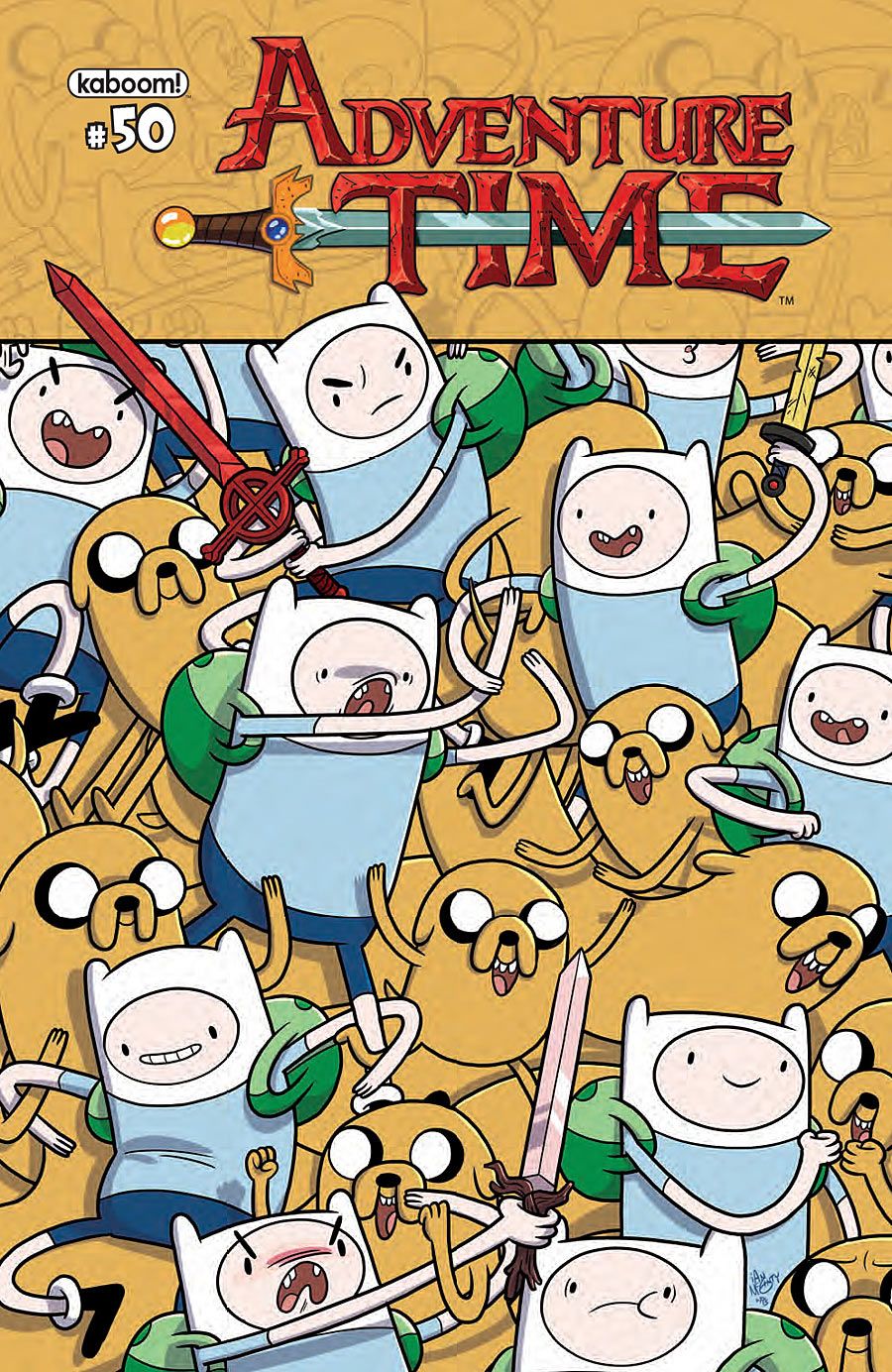The opening scene of Christopher Hastings and Ian McGinty's "Adventure Time" #50 is a fun prelude to the main action, with the tree serving as a bridge between the past and present, but it's more meaningful than it seems at first glance. It actually sets up the framework of Hastings' story structure and theme; as the Lich points out, Death comes to all things -- and so how can any one hero's efforts matter in the long run? Finn's adventure in the rest of "Adventure Time" #50 answers that question.
McGinty's perspective and elastic linework grab the reader's attention quickly. The panel in which Billy punches the Lich has unusual and beautiful composition. The three-dimensional texture of the Lich's face, especially the amount of detail around the eyes and in his mouth, draw the reader in. Maarta Laiho's color work is upbeat and vivid throughout, but the bright slim green for the Lich's eyes and the mauve and plum purple of his mouth are particularly smart and effective hue choices. McGinty and Laiho make the Lich and the Evil Tree creepy and repulsive, yet still cartoony and cute. They each elicit a real shiver but also a real laugh.
Hastings writes a lot of enjoyable dialogue in the introductory flashback scene, including a play on the word "grave." I don't know if this was a deliberate Shakespearian allusion, but he deserves points for it either way. Billy gets the best lines, including "shut your skull mandible" and "Whatever. You are a tree." The extended visual gag of the Evil Tree is by far the funniest scene in "Adventure Time" #50, especially Jake's hopeful suggestion that the faces might come back,
and then his horrified reaction when he imagines the result. The Evil Tree demonstrates Hastings' and McGinty's impressive comic strengths. For better or worse, Hastings is more focused on themes of heroism and free will than on comedy. He gives the issue a controlled shape and trajectory, but I wish there were more scenes with the brilliant light touch and perfect timing of the Evil Tree reveal.
The biggest drawback of Hastings' story is that it completely sidelines Jake and the other supporting characters in a big anniversary issue. Hastings realizes this and lets Jake call it out by yelling, "Hey the Dog is Here Too!" when the Tree calls out Finn's name -- but that doesn't change how "Adventure Time" #50 makes little use of one of the strongest aspects of the cartoon and comic: its ensemble cast.
Sure, Finn is the main character, but Finn and Jake usually operate as a duo, with lots of powerful friends who assist them. "Adventure Time" #50 is about the solo hero in many incarnations. The whole village -- or rather, the whole Kingdom of Ooo -- doesn't fit into the monomyth. By having Finn embody the Immortal Hero, who is Good and must fight Evil, Hastings raises him above and apart from the other characters, even his trusty co-star and best friend.
For all his quirky behavior and dialogue, Finn's age, gender, lack of parental supervision and choice of weapons conform perfectly to the standard hero template for epic fantasy. To counteract this somewhat, Hastings chooses Shoko and Davey, unconventional or nontraditional alter-egos, for Finn's past and future selves in the middle of the story. The one that counts most is still Billy, the hero that came first and was a stereotypical great warrior. The mechanics of Finn's hero journey are original and wacky on the outside, like the use of a picture album as artifact/portal, but the inside story structure is old.
Despite the debatable benefits of fitting Finn into a more traditional hero's mold, the story does achieve emotional payoff. "Adventure Time" #50 gets metaphysical and over-wordy when Finn is in butterfly and comet form, but it comes together in the victory moment when Finn rejects fatalism, telling the Lich that "the all of my being is yet to be determined, dude!"
"Adventure Time" #50 is a successful one-shot story that makes points about free will and a hero's duty and commitment and honors Finn as part of that tradition. However, Hastings' emphasis on advancing the concept of the Eternal Hero comes with some cost to other characters, who are equally -- if not more -- beloved and iconic.

